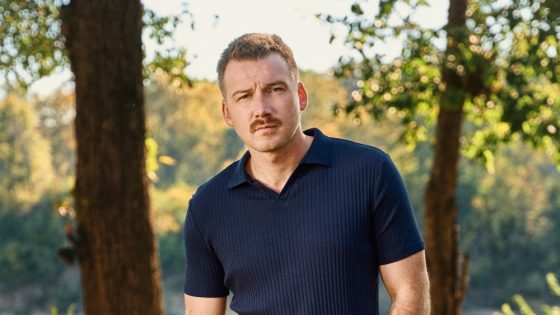The Current24:13What’s behind Canada’s teacher shortage
For Gurpreet Kaur Bains, two words describe the teacher shortage plaguing Canadian schools: “chaotic and stressful.”
“We are always short teachers, and it’s a hard time filling out certain positions,” the learning support teacher told The Current’s Matt Galloway.
“Personally, for learning support teachers, sometimes we don’t get teachers to replace us who can do the job. So there will be individuals in our classrooms who are not familiar with the work,” she added.
The teacher shortage is far from a B.C.-specific problem. In Quebec, the 2023-24 school year started with more than 8,500 teaching vacancies yet to be filled — including nearly 2,000 full-time vacancies.
Further east, 52 per cent of students who graduate with a bachelor of education in New Brunswick don’t teach in the province. And in Nunavut, there’s a nine to 10 per cent vacancy rate for teachers at the beginning of this school year.
Bains is also the language department head at a high school in Surrey, B.C. — one of the largest school districts in the province, she says. Yet, there are overcrowding problems within the school, and teachers aren’t able to keep up.
Librarians, vice-principals or even principals might get pulled in to cover a class without a teacher at Bains’ school, she said.
“We are just in survival mode, and we see that it’s affecting everybody involved in education,” she added.
Increase in non-certified teachers
According to Nathalie Reid, director of the Child Trauma Research Centre at the University of Regina, the shortage is so bad that there has been a “dramatic increase in the inclusion of non-certified or non-qualified teachers” in classrooms across Canada.
“During the pandemic … provinces like Manitoba developed a 30-hour basic classroom skills program for limited teaching,” she told Galloway. “And so we started seeing non-qualified teachers being hired into schools.”
In Quebec, a report by Auditor General Guylaine Leclerc found that 30,000 people teaching in Quebec schools between 2020 and 2021 had no teaching certificate or provisional qualifications, according to The Canadian Press.
A shortage of teachers is impacting many school boards across the country. The situation in Quebec is so dire that the province says it will have to put unqualified people in schools to supervise classrooms.
Reid doesn’t fault schools for coming up with these measures during the pandemic. But she’s concerned that what she called an “interim stop-gap solution” might become permanent — especially because teaching has evolved a lot in the past few decades.
“What’s really happened in the 22 years since I’ve been involved is we’ve seen a dramatic shift in what happens in bachelor of education programs,” she said.
“We’ve moved towards teaching social skills, emotional regulation, attending to mental health and well-being, critical thinking skills, entrepreneurial or innovative mindset skills that young people need as they move through their lives and as they move into adulthood.”
But if a teacher hasn’t been through that training, Reid says they “become a purveyor of kind of a pre-packaged curriculum … and it negates all of the stuff that we have learned is critically important, in fact, to learning.”
Teachers aren’t babysitters
For Annie Kidder, executive director of the public education advocacy group People For Education, the teacher shortage and the stop-gap measures show a lack of recognition and appreciation for teachers’ duties.
“I don’t think as a society that we … recognize enough how important this job is, how vital it is to our economy, our sustainability, our prosperity, our social cohesion, [and] what it means to us as humans to educate kids well,” she said.

Kidder says the problem is down to the idea that a grown-up — any grown-up — is needed in a class at all times.
But treating teaching as a job any adult can do turns teaching into babysitting, “as if it’s like we’ve just got to keep them safe for the day,” Kidder said.
If students’ learning needs aren’t met as a result, that may lead to adverse behavioural effects, Bains said.
“We can see that some of these kids are now showing behaviours that are aggressive,” she said. “They’re stressed, they don’t want to be there. They will barge out of classrooms. They will shout or they will show certain behaviours that we have not seen in them before.”
Treating teachers as babysitters also leads to extra work for non-teaching staff, who now have to catch up on their job-specific duties on their own time.
“I know that myself and my colleagues … are feeling very heartbroken, and the morale is really low,” she said. “The same job that … had so many supports in the past or whatever, is cut to the bones now. It’s stressful.”
At a news conference in September, B.C. Minister of Education Rachna Singh said the government is aware of the growing student population and is actively working to support school districts amid staffing shortages.
“Many school districts are facing enrolment pressure…. [We are] coming up with new ideas, like urban schools [and] how we can reduce the timelines to build the schools or expand the schools,” said Singh.
That same month, B.C. Premier David Eby acknowledged more schools need to be built and more teachers are needed to staff those schools.
Everyone’s problem
With 95 per cent of students in Canada attending a public school, Kidder says we have to take care of it.
That “we” includes all Canadians, she said, even those who don’t have students in public schools, or who work there.
“It’s where we’re building … the next generation. So we have to take this seriously, and I don’t think we are.”
Source Agencies





